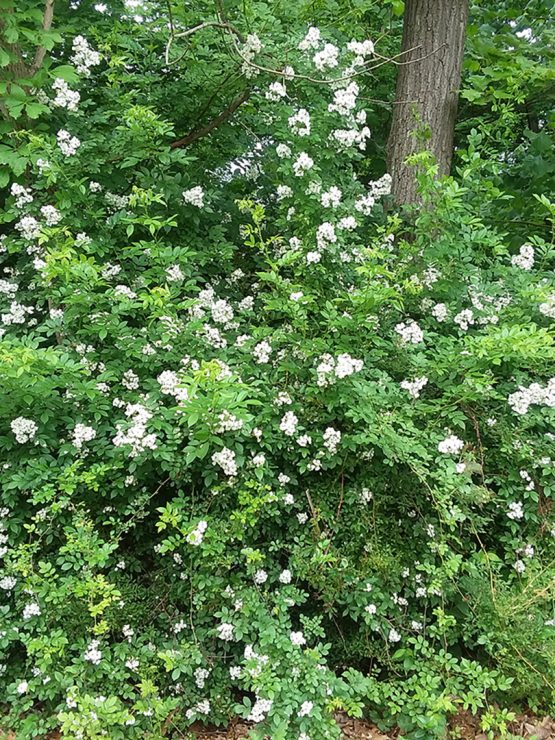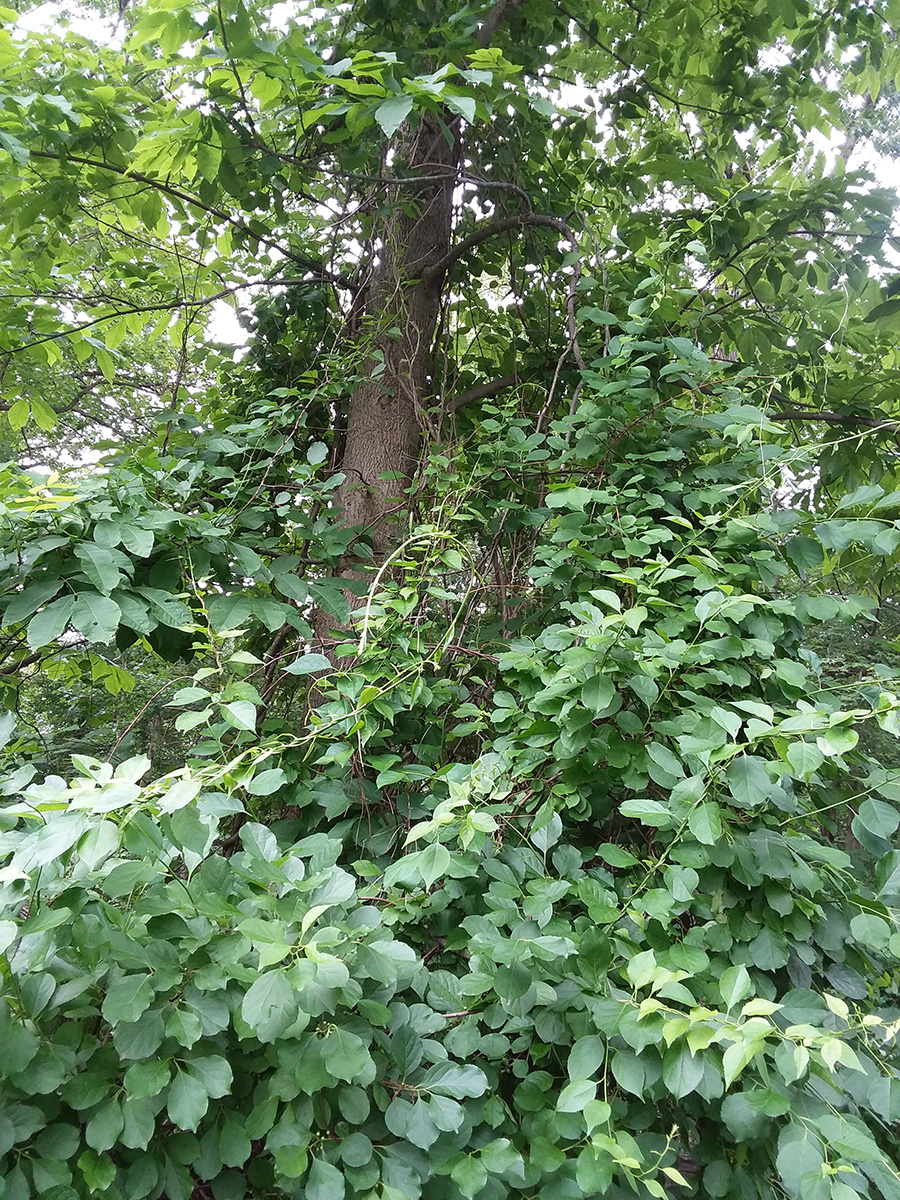
Invasive plants can be native or non-native, spreading fast and labeled as noxious weeds from mostly disturbed ground. Native plants are indigenous to North America with specific geographical and climatic rules for survival. Non-native plants were brought here from other regions and became invasive or noxious, causing depleted water sources and lessened seed development for native plants.
Non-native plants like Japanese Knotweed, Garlic Mustard, Oriental Bittersweet, and Multi-Flora Rose have become part of Meadowcroft’s natural landscape.
- Japanese Knotweed can consume very wet areas and crowd out native plants. On the positive side, it is a good pollinator for the honeybee! Control measures primarily consist of cutting it down to its nubs.
- Garlic Mustard deters natives from the under story of a forested area. This plant has a great aroma and originally was brought into North America as a vegetable.
- Oriental Bittersweet is a vine that constricts and smothers trees. It has also been used for decorative purposes for making wreaths.
- Multi-Flora Rose has taken over hiking trails and roadsides and is edging near exhibits. This plant was initially for erosion control, natural hedging, and as root stock for grafting ornamental roses. Multi-Flora Rose likely first arrived at Meadowcroft during the 1953 reclamation program to control erosion after strip mining ended.
Native plants like Paw Paws, Jack-In-The-Pulpit, Purple Flowering Raspberries, and Common Milkweed have enhanced the visual beauty at Meadowcroft.
- Paw Paw trees produce a sweet fruit, can be found in groves under a canopy, and were part of the diet for Meadowcroft Rockshelter visitors.
- Jack-In-The-Pulpit leaves behind a cluster of scarlet berries in the late summer to fall season. Its blooms are green and showy by May in the Monongahela Village.
- Purple Flowering Raspberries are delicate berries for eating, found in the Monongahela Village and along Fallen Timber Road.
- Common Milkweed has been useful for cordage and feeding fodder for Monarch Butterflies, and its flowers attract many pollinating insects.
The flourishing plant life at Meadowcroft has been problematic and pleasant for all us outdoor enthusiasts. Walking the wooded areas is still the best way to acquaint oneself to the wide variety of plants that grow and thrive at Meadowcroft.
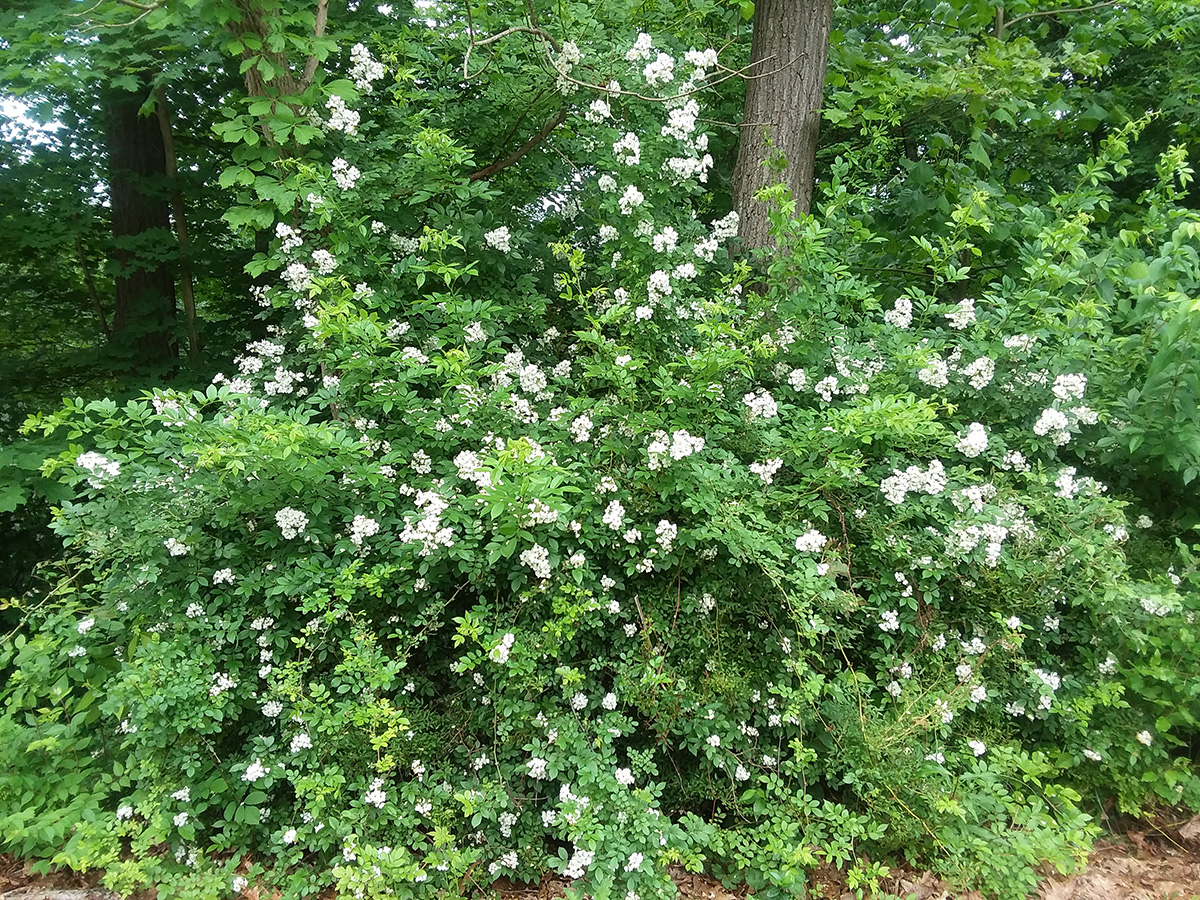
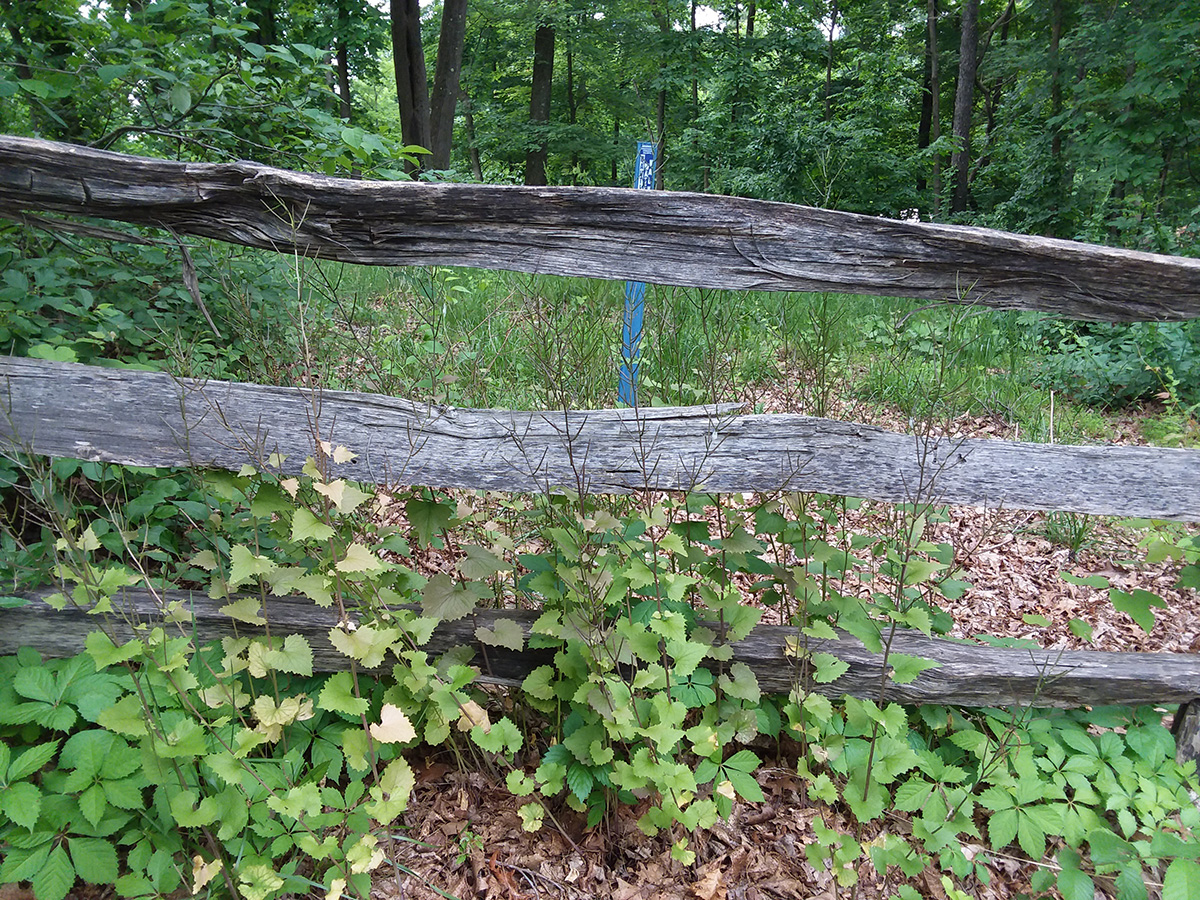
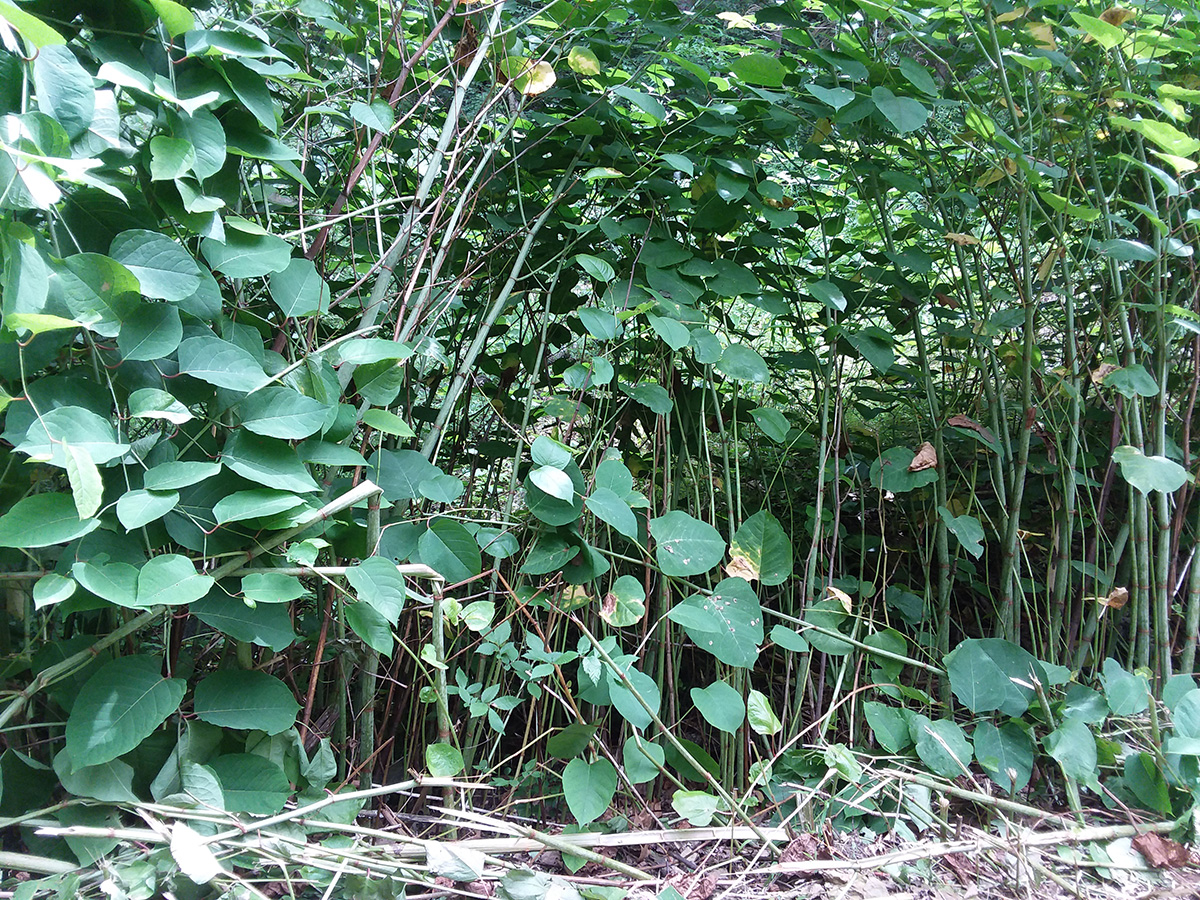
Sources
- DCNR
- Roger Tory Peterson & Margaret McKenny, “Afield guide to Wildflowers of North Western & North-Central N. A., Houghton Mifflin Co., Boston, 1968.
- Fern Marshall Bradley, Barbara W. Ellis & Ellen Phillips Ed., Rodale Organic Gardening, N. Y., 2009.
- Penn State Extension Master Gardener Manual, University Park, PA., 2016.
- Albert Miller’s unpublished paper, “The Bancroft As A Tree Farm.,” Meadowcroft Collection.
Lisa Maust is a Interpreter/Tour Guide with Meadowcroft. Learn more about her experiences as a volunteer here: 5 Questions with Interpreter Lisa Maust

